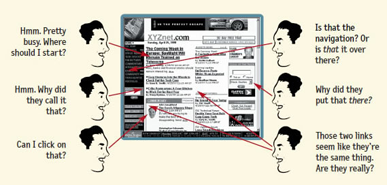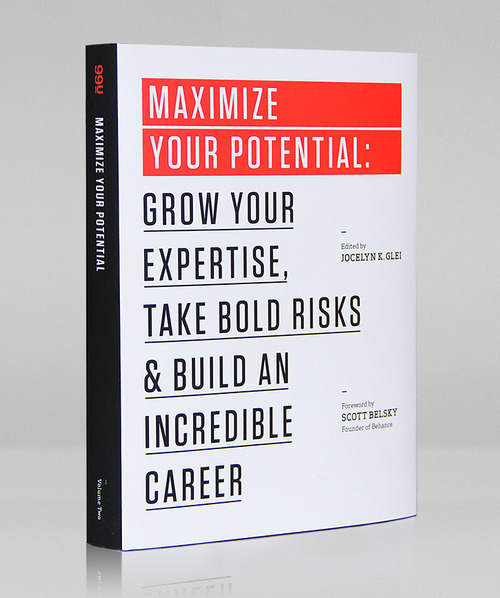17 Best Book's Ever For Web Designer & Creatives 2016 Updated.
00:00 Bharat modi 9 Comments
17 Best Book's Ever For Web Designer & Creatives
Today i wanted to share Some Of Cool Designing concept and Productivity Books For Web-designers/ designers only.
The End of Print: The Grafik Design of David Carson
The End of Print is the definitive statement of the work of the great iconoclast designer, David Carson. In print for the first time in several years, this classic book has itself become part of the history of graphic design. It features work from the magazines where Carson first made his mark – including Transworld Skateboarding, Surfer, Beach Culture and Ray Gun – as well as his instantly recognizable advertisements for clients such as Nike, Pepsi, MTV and Sony. Lewis Blackwell’s text includes an interview in which Carson examines the origins of his approach and discusses the extreme reactions to his work.
About the Author
Lewis Blackwell is head of creative direction at Getty Images. Formerly publisher and editor of Creative Review he is the author and editor of numerous critically acclaimed books including David Carson: 2ndsight, G1 with Neville Brody andSoon: The Future of Brands with Chris Ashworth. A regular writer and commentator on graphic design and typography advertising film video and multimedia, Blackwell lectures and chairs awards juries internationally.
David Carson has been described as the most influential graphic designer working today. He directs commercials and short films and lectures internationally. Carson was awarded “best use of design and photography” from the International Center for Photography, New York. Newsweek magazine said Carson “changed the face of graphic design”. Carson’s previous publications include David Carson: 2ndsight, a winner of the 77th Annual Art Directors Awards.
Mobile First - Luke Wroblewski
For years, most Web teams have designed products and information for the desktop/laptop PC. For these teams, mobile (if it even happened) was a barebones port of the desktop version. Sadly, this approach actually made sense for a while. Browsing the Web on mobile phones was painful; carriers controlled access to the Web on their devices; and mobile network speeds often made everything grind to a halt. So few people used the Web on mobiles and those that did were frequently faced with an unpleasant experience.
But things have changed so dramatically over the past few years that starting with the desktop may be an increasingly backwards way of thinking about a Web product. Designing for mobile first not only prepares you for the explosive growth and opportunities in this space, it forces you to focus and enables you to innovate.
Making and Breaking the Grid - Timothy Samara
For designers working in every medium, layout is arguable the most basic, and most important, element. Effective layout is essential to communication and enables the end user to not only be drawn in with an innovative design but to digest information easily.Making and Breaking the Grid is a comprehensive layout design workshop that assumes that in order to effectively break the rules of grid-based design, one must first understand those rules and see them applies to real-world projects.
Text reveals top designers' work in process and rationale. Projects with similar characteristics are linked through a simple notational system that encourages exploration and comparison of structure ideas. Also included are historical overviews that summarize the development of layout concepts, both grid-based and non-grid based, in modern design practice.
Don't Make Me Think, Revisited: A Common Sense Approach to Web Usability
When I wrote Don’t Make Me Think, my intent was to help people learn to think like a usability expert: to ask the same questions that I have in mind when I’m trying to make something more usable.
I believed that with a little bit of instruction most people could do a lot of what I do themselves, since much of it just seems like common sense once you hear it explained.
It’s sold over 400,000 copies in twenty languages, and people have said many very nice things about it, like this:
“After reading it over a couple of hours and putting its ideas to work for the past five years, I can say it has done more to improve my abilities as a Web designer than any other book.”—Jeffrey Zeldman, author ofDesigning with Web Standards
And now, after 13 years, I’ve finally taken the leap and done a major update.
Why has it been so popular?
- It’s short. I wrote it for busy people who don't do usability for a living, so it only covers what you really need to know. You can read it on a long airplane ride.
- It’s an easy, engaging read. I get email from people saying things like “My father-in-law, who barely uses a computer, picked up my copy and read the whole thing.”

- It’s a great introduction for beginners. These days, it’s usually the first book people read about usability.
- ...and for bosses. A story I hear constantly: “I gave it to my boss. He read it–because it’s short–and finally ‘got’ what I’ve been trying to tell him for years about usability. Then he bought copies for our whole team.”
Who should read it?
 Don't ask me. Ask the Amazon reviewer who said:
Don't ask me. Ask the Amazon reviewer who said:“Absolutely everyone should read this book. The internet would be a far better place.”
FAQ
How is this different from the 2nd edition?
Good question. I ended up rewriting a lot more than I expected, including a whole new chapter about usability for mobile web sites and apps. And the examples are now from the current century.
I’ve been doing Web design [or development, marketing, etc.] for a long time. Won’t this be too basic for me?
As one Amazon reviewer said:
“If you’re new to web design, you’ll learn TONS; if you’re a seasoned pro, you’ll get a solid refresher and maybe even pick up on a few new things.”
A lot of Web professionals tell me they leaf through it again every time they start a new project, just to remind themselves of all the “common sense” that they tend to forget.
What’s the difference between this book and your other one?
Don’t Make Me Think explains what everyone should know about usability.
Rocket Surgery Made Easy explains how to do your own usability testing.
Show Your Work!: 10 Ways to Share Your Creativity and Get Discovered Description
Review
"[Show Your Work is] timeless; readers can return to it repeatedly throughout life and still glean useful ideas and tips... Anyone starting out (or starting over)...will find upbeat encouragement here."
--Library Journal
“Sassy and spot-on.”
--Publishers Weekly
Review
“Austin Kleon is one of the brightest new minds on the creative landscape. SHOW YOUR WORK! demonstrates why. With simple yet profound insights, and an array of his amazing images, he casts aside old stereotypes of the creative life and tells what it’s really like.”
—DANIEL H. PINK, author of To Sell Is Human and Drive
Layout Workbook is one of five volumes in Rockport's series of practical and inspirational workbooks that cover the fundamental areas of the graphic design business. In this edition, author Kristin Cullen tackles the often perplexing job of nailing down a layout that works.
More than a collection of great examples of layout, this book is an invaluable resource for students, designers, and creative professionals who seek design understanding and inspiration. The book illuminates the broad category of layout, communicating specifically what it takes to design with excellence. It also addresses the heart of design-the how and why of the creative process.
Cullen approaches layout with a series of step-by-step fundamental chapters (a "how-to" of layout) addressing topics such as The Function of Design, Inspiration, The Design Process, Intuition, Structure and Organization, The Interaction of Visual Elements, Typography, and Design Analysis. The book offers inspirational quotations and a unique, progressive design that truly reflects its content.
About the Author
Timothy Samara is a graphic designer and educator working in New York City. His 15-year career, focused primarily on visual identity development and information design, includes adverse project history - from branding systems and user interfaces to books, animation, and architectural work - for a wide range of corporations and not-for-profit organisations.
This latest volume in Rockport's Workbook series, Publication Design Workbook is packed with information regarding the ins and outs of publication design. The media featured includes magazines, literature systems, newsletters, exhibition catalogs, annual reports, newspapers, and retail catalogs. Both current and historical approaches are provided to give readers a complete background on design style, application, and techniques involved in creating effective publications.
Readers will develop a clear understanding of publication design through a comprehensive and accessible workshop-style format. Fundamentals of form and content are included, along with diagrams to further textual understanding. This is the most complete book for designers on applied publication design principles combined with an awe-inspiring collection of the best work from around the world.
Adhering to certain layout and grids standards and principles is important for any job from brochures, to annual reports, to posters, to websites, to publications. However, knowing how to bend the rules and make certain grids work for the job at hand takes skill.
This book will outline and demonstrate basic layout/grid guidelines and rules through 100 entries including choosing the a typeface for the project, striving for rhythm and balance with type, combining typefaces, using special characters and kerning and legibility. These essentials of grid design are critical to the success of any job
101 Things I Learned in Architecture School - Matthew Frederick
his is a book that students of architecture will want to keep in the studio and in their backpacks. It is also a book they may want to keep out of view of their professors, for it expresses in clear and simple language things that tend to be murky and abstruse in the classroom. These 101 concise lessons in design, drawing, the creative process, and presentation -- from the basics of "How to Draw a Line" to the complexities of color theory -- provide a much-needed primer in architectural literacy, making concrete what too often is left nebulous or open-ended in the architecture curriculum. Each lesson utilizes a two-page format, with a brief explanation and an illustration that can range from diagrammatic to whimsical. The lesson on "How to Draw a Line" is illustrated by examples of good and bad lines; a lesson on the dangers of awkward floor level changes shows the television actor Dick Van Dyke in the midst of a pratfall; a discussion of the proportional differences between traditional and modern buildings features a drawing of a building split neatly in half between the two. Written by an architect and instructor who remembers well the fog of his own student days, " 101 Things I Learned in Architecture School "provides valuable guideposts for navigating the design studio and other classes in the architecture curriculum. Architecture graduates -- from young designers to experienced practitioners -- will turn to the book as well, for inspiration and a guide back to basics when solving a complex design problem.
Start with Why -
Simon Sinek
Start with Why offers a number of examples to support Sinek's ideas as well as providing ideas for how to check on if an action is following the "why." Sinek himself is a business consultant, but he avoids putting together a compilation of his favorite exercises (and of course, how they lead to success); instead, he focuses on his "why" and creates a book which is not about him. Apple is successful, but they did it without Sinek. What Sinek does is look at those who have succeeded, figures out why, and then passes those ideas on to us.
Start with Why is a must-read for leaders of any type, but also for anyone wanting to get back to basics. While Sinek resists the temptation to create a self-help book, it is not a stretch to see how he makes sure our personal actions reflect on our "why" and will only lead to a fuller life. Sinek is new in the business publishing world, but with this start his future books will be eagerly awaited.
Manage Your Day-to-Day - Jocelyn K. Glei
Stop doing busywork. Start doing your best work.
Are you over-extended, over-distracted, and overwhelmed? Do you work at a breakneck pace all day, only to find that you haven’t accomplished the most important things on your agenda when you leave the office?
The world has changed and the way we work has to change, too. With wisdom from 20 leading creative minds, Manage Your Day-to-Day will give you a toolkit for tackling the new challenges of a 24/7, always-on workplace.
Featuring contributions from: Dan Ariely, Leo Babauta, Scott Belsky, Lori Deschene, Aaron Dignan, Erin Rooney Doland, Seth Godin,Todd Henry, Christian Jarrett, Scott McDowell, Mark McGuinness, Cal Newport, Steven Pressfield, Gretchen Rubin, Stefan Sagmeister, Elizabeth G. Saunders, Tony Schwartz, Tiffany Shlain, Linda Stone, and James Victore. Plus, a foreword from Behance founder & CEO Scott Belsky.
Maximize Your
Potential -
Jocelyn K. Glei
Success isn't about being the best.
It's about always getting better.
Can you step outside your comfort zone? Bounce back from failure? Build new skills? Tapping into your true potential is no idle endeavor. It demands creativity, dedication, and a whole lot of hustle.
With wisdom from 21 leading creative minds, 99U'sMaximize Your Potential will show you how to generate new opportunities, cultivate your creative expertise, build valuable relationships, and take bold, new risks so that you can utilize your talents to the fullest.
Author:David Dabner, Sandra Stewart, Eric Zempol
PUBLISHER: Wiley
Good Graphic design Illustration's for Beginner . great Examples From books, to magazines, to websites, and even mobile devices.
unflattening
AUTHOR: Nick Sousanis
PUBLISHER: Harvard University Press
To do this, Sousanis used “visual thinking,” with all of his pages styled in a similar variation like the one below.
Best described by its own book cover, this work of graphic art within a book on graphic art weaves “together diverse ways of seeing drawn from science, philosophy, art, literature and mythology, [by using] the collage-like capacity of comics to show that perception is always an active process of incorporating and reevaluating different vantage points.”
Download Pdf
Design Elements:,Color Fundamentals
AUTHOR: Aaris Sherin
PUBLISHER: Rockport Publishers
This manual of color is a perfect resource for every designer. It’s chock-full of essential information, from color theory to pairings for real world projects. With this guide on your shelf, you will learn how to truly and effectively communicate with color and how best to use it in your client’s projects.
Logo Design Love : Creating Iconic Brand Identities
AUTHOR: David Airey
PUBLISHER: PeachPit Press
Discovering and understanding your client’s brand identity is critical to creating the perfect logo. David Airey, the author of Logo Design Love, takes the reader through the paces of how he and other designers go from concept to completed product with their logos.
Download Pdf
know your onions
UTHOR: Drew de Soto
PUBLISHER: BIS Publishers
Despite the somewhat silly title, this book is a seriously epic tutorial on the business aspects of design. As nice as it would be to do away with the business side of the graphic design process, most of us cannot afford to do that quite yet.
If you’re a working graphic designer, or plan to become one, this is your business bible. It will make sure you understand the less creative, but equally important, part of being a graphic designer: getting paid.
Download Pdf
The Design Of Every Day Things
by Don Norman (Author)
An industry classic explaining how to design products for real human use.
Download Pdf
Thoughts On Design
relevant to today's designers.
houghts on Design
Aug 19, 2014
i hope You Enjoy Reading Books..
Thank you For Reading .
If you like It please share & spread the word.
























Thank you for this detailed article on Web designing course in Chennai. I’m aspiring to do Web designing course in Chennai.
ReplyDeletei glad you do.
ReplyDeleteI downloaded, definitely improve the design concept of students.
ReplyDeleteRef - web design company in jaipur
Awesome David.
DeleteHello Admin, this article you have written here on HTML5 training in Chennai is very informative. Thank you for that.
ReplyDeletethankyou Diana.
ReplyDeleteGreat article. I am happy to visit your blog.Thanks for sharing.
ReplyDeleteWeb designing training in chennai
I have read your post very informative and i got new
ReplyDeleteupdates about live chat plugins. i have also read
some advanced plugins for live chat, you may like to
read http://www.labstech.org/live-chat-plugins-
wordpress-2016-02-18/
Thanks for share this informative post.
Ensure your WWW. has nothing to hide with a Website Privacy Policy
ReplyDeleteand, keep it up to date with our leading online contract platform. Website Privacy Policy